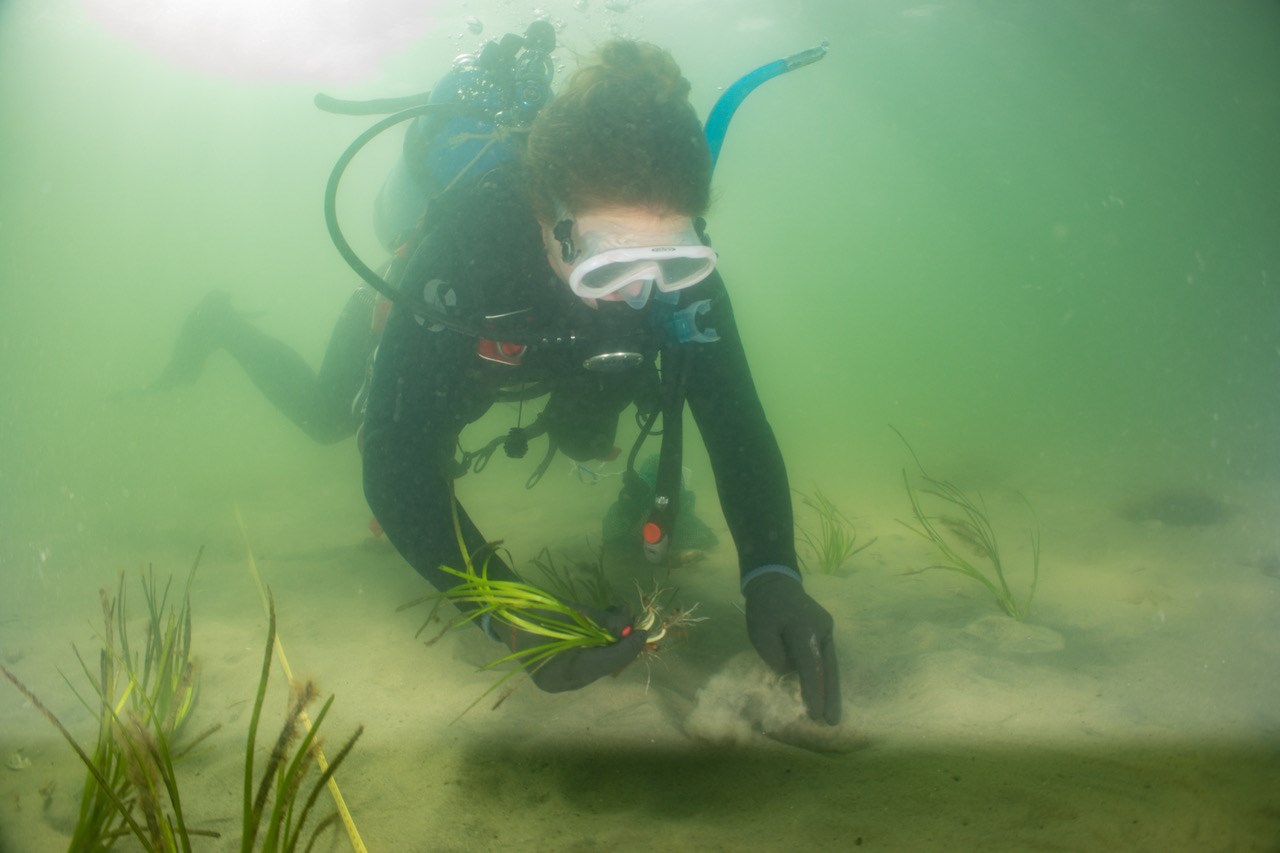Last updated: January 16, 2025
Article
Project Profile: Reverse Seagrass Meadow Decline: Identify Heat-Tolerant Variants, Seed Sources and Outplanting Sites

NPS
Inflation Reduction Act
Resilience | FY24 $804,796
The National Park Service (NPS) will identify seagrass meadows and map optimal areas for future seagrass restoration to support decisions that will enhance restoration and resilience of seagrass meadows. The goal of the project is to develop scientific information needed to chart a course of action in effort to reverse declining seagrass meadows that harbor biodiversity, strengthen shorelines, improve water quality and are vital to fish nurseries at coastal parks from North Carolina to Maine.
Why? Approximately 11,200 acres of eelgrass meadows are found in five East Coast National Seashores. Eelgrass, a type of seagrass, is crucial for the coastal environment, providing habitat and supporting fisheries. However, eelgrass has been declining due to human impacts, and long-term monitoring indicates that high summer water temperatures due to climate change contributed to most recent declines. Between 1995-2021, over 4,000 acres were lost. To address this, the NPS will move eelgrass seeds from resilient populations to restoration sites, evaluating their compatibility.
What else? The NPS will identify restoration and recovery opportunities for imperiled ecosystems affected by the loss of seagrasses due to climate change. This assessment and restoration of eelgrass along the East Coast will enhance ecosystem resilience and may yield the best chance to halt or even reverse seagrass decline.
